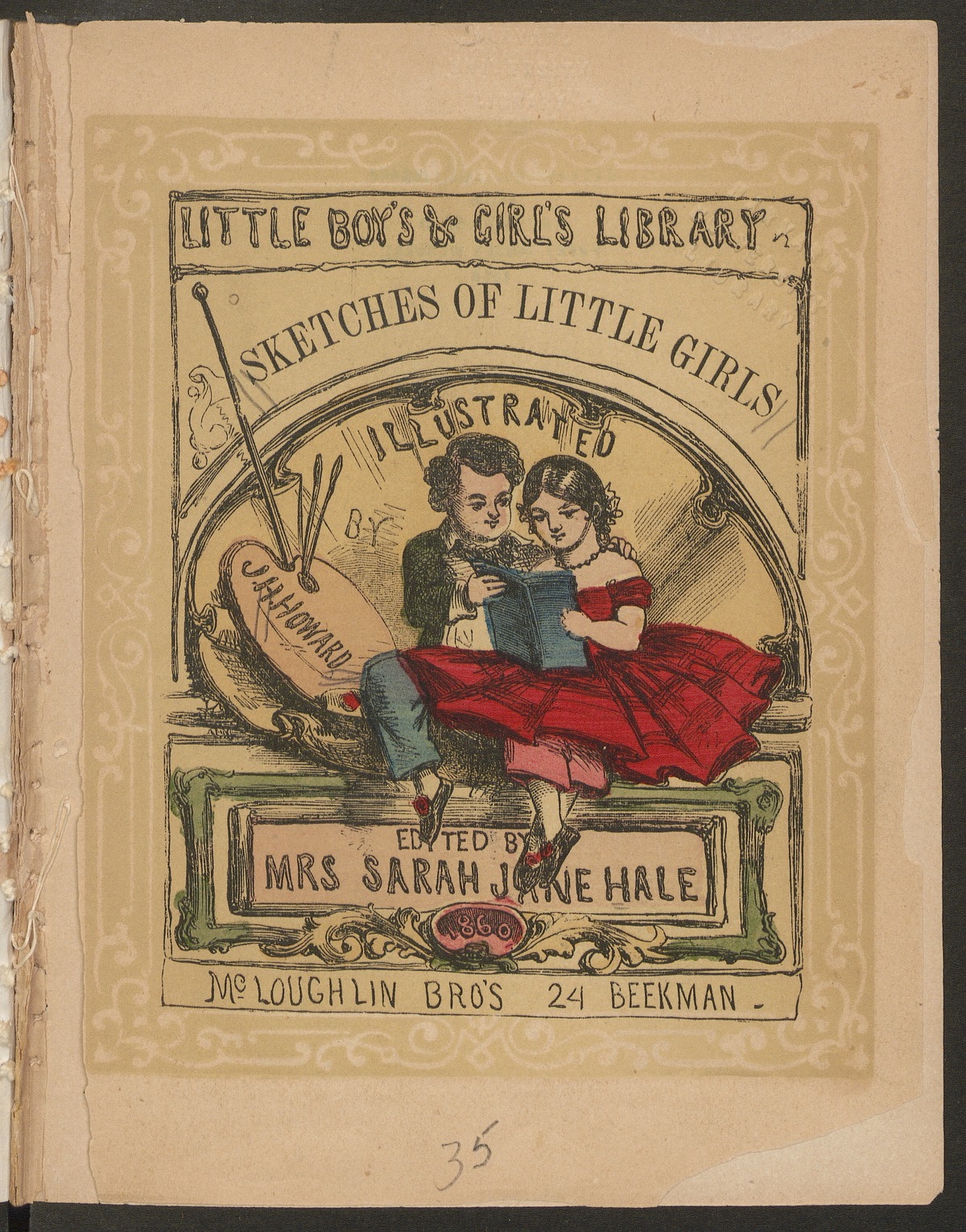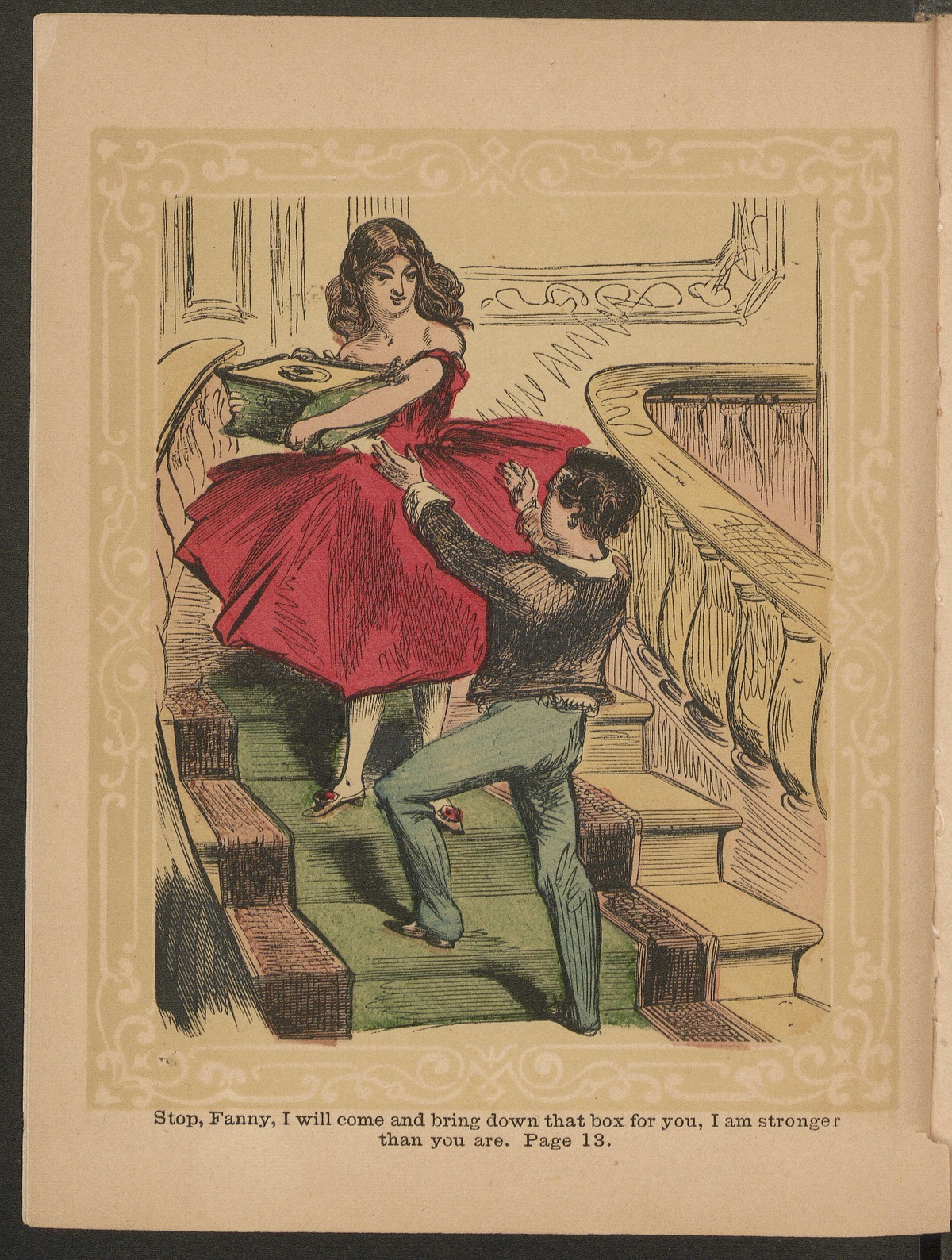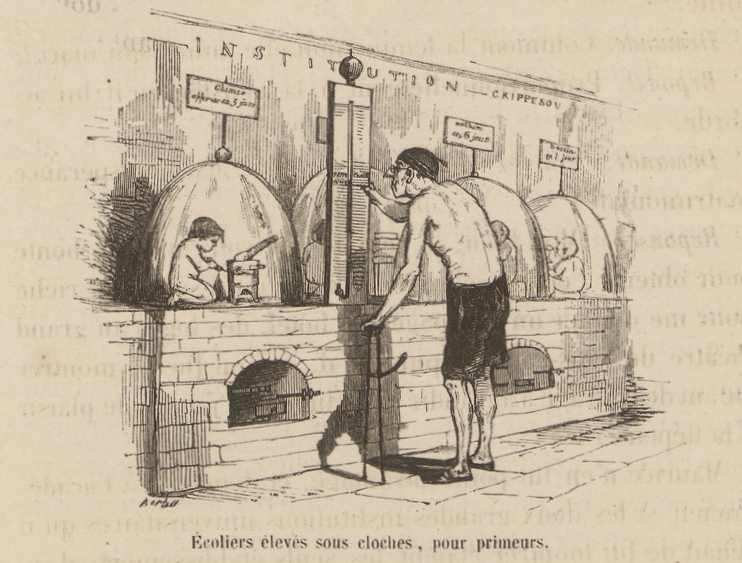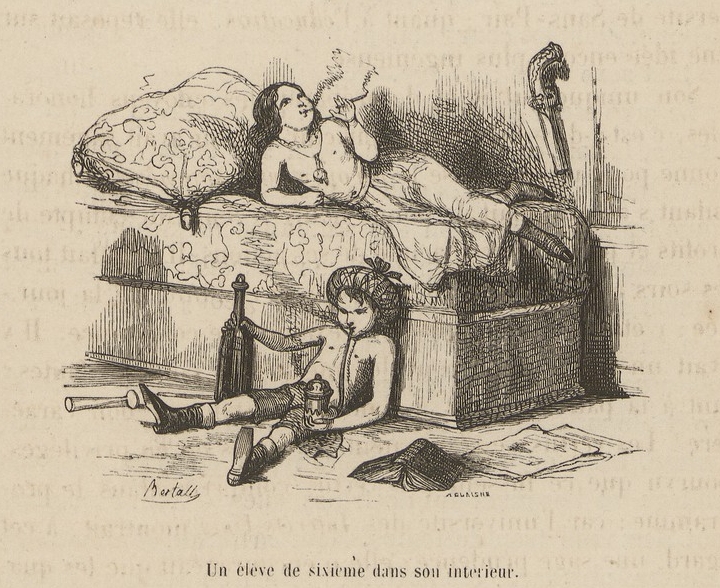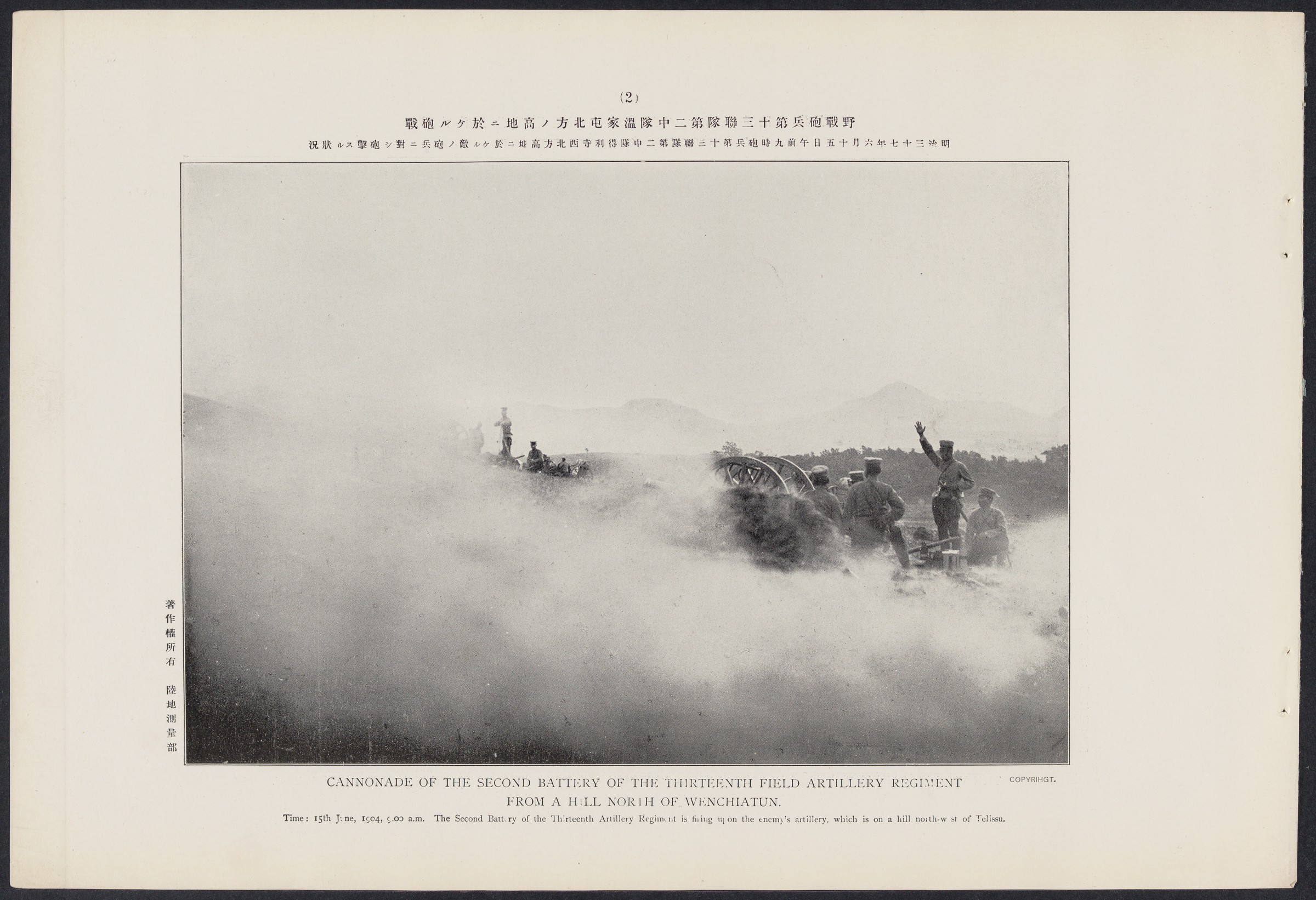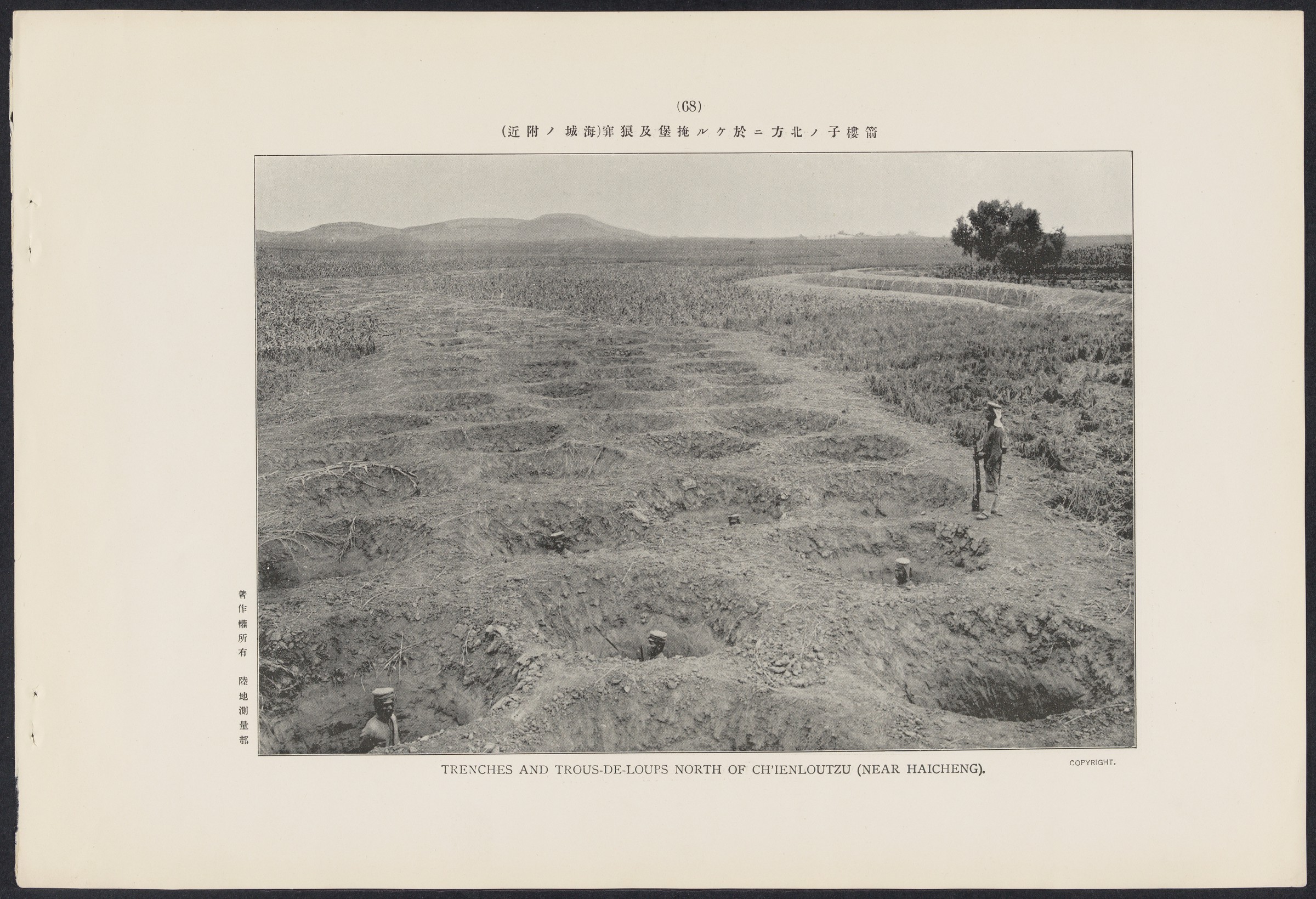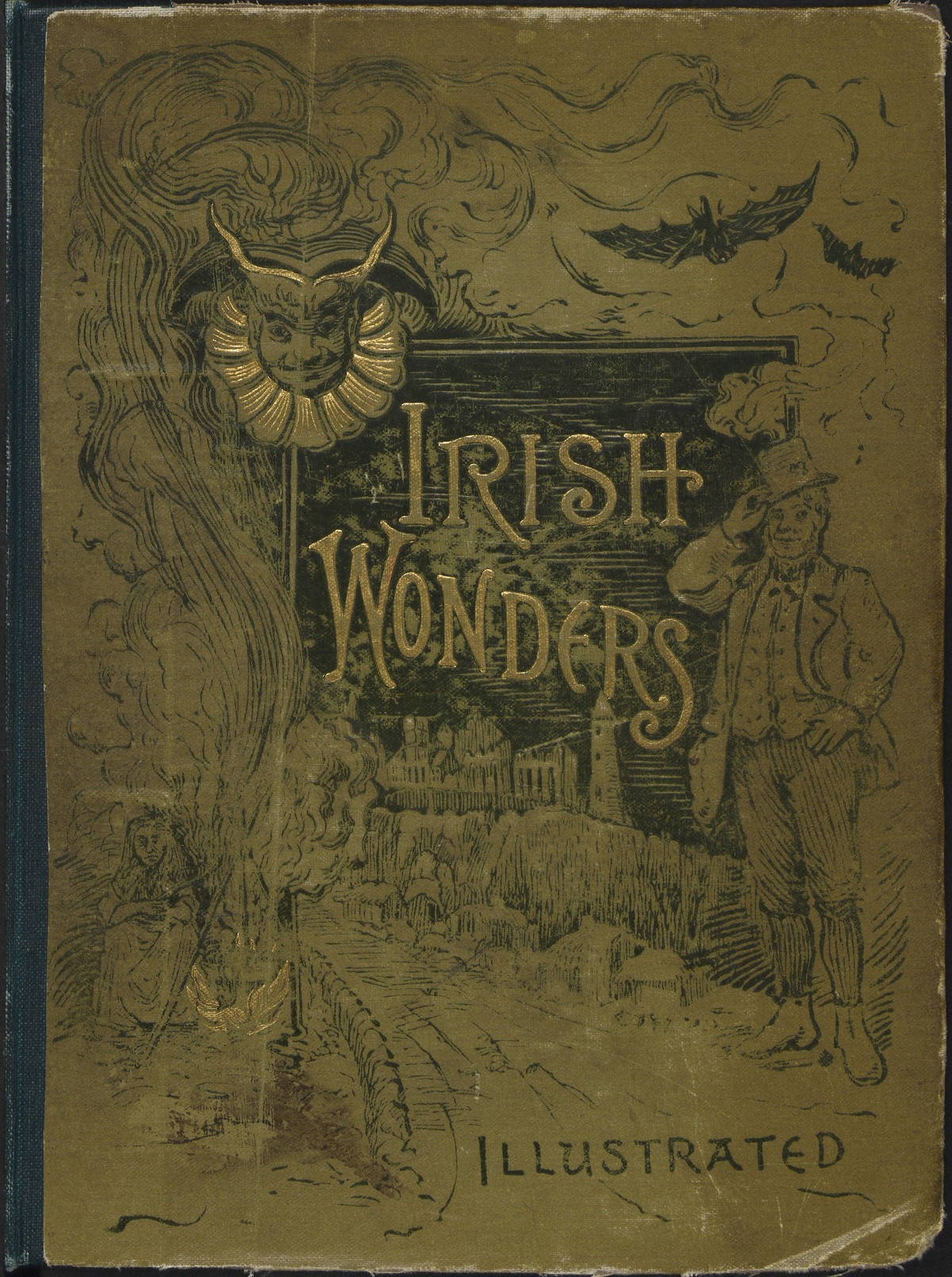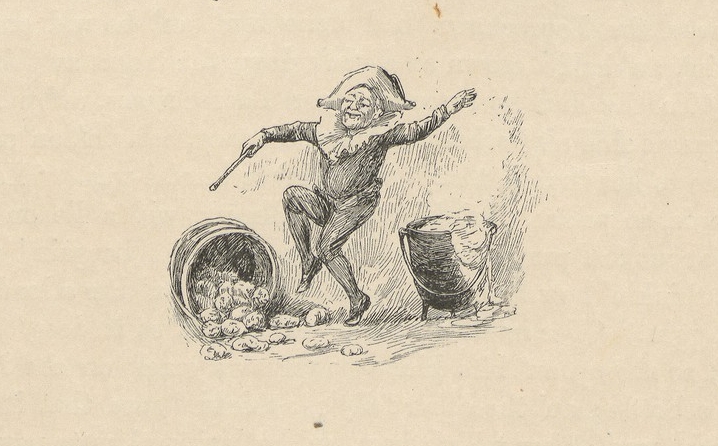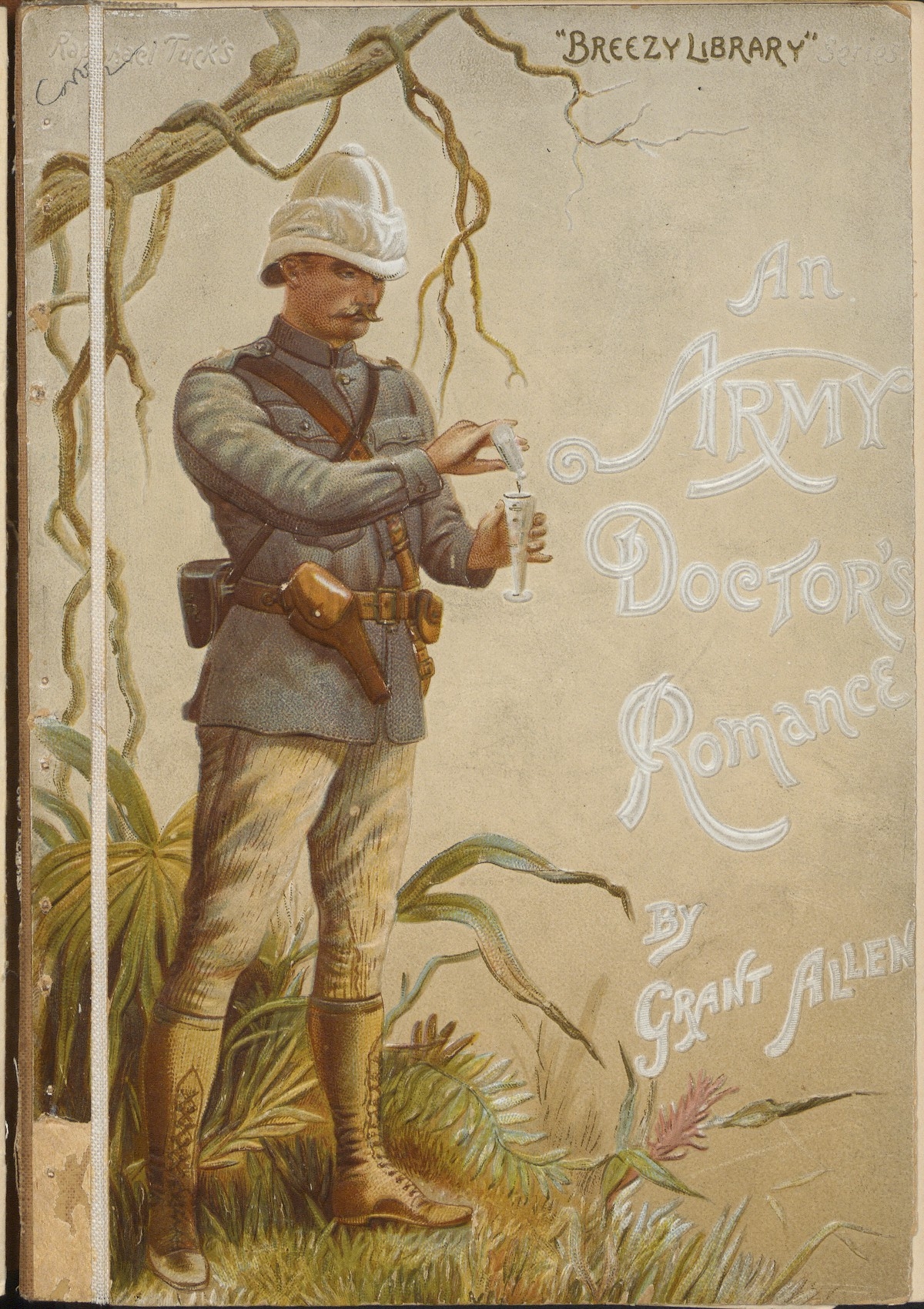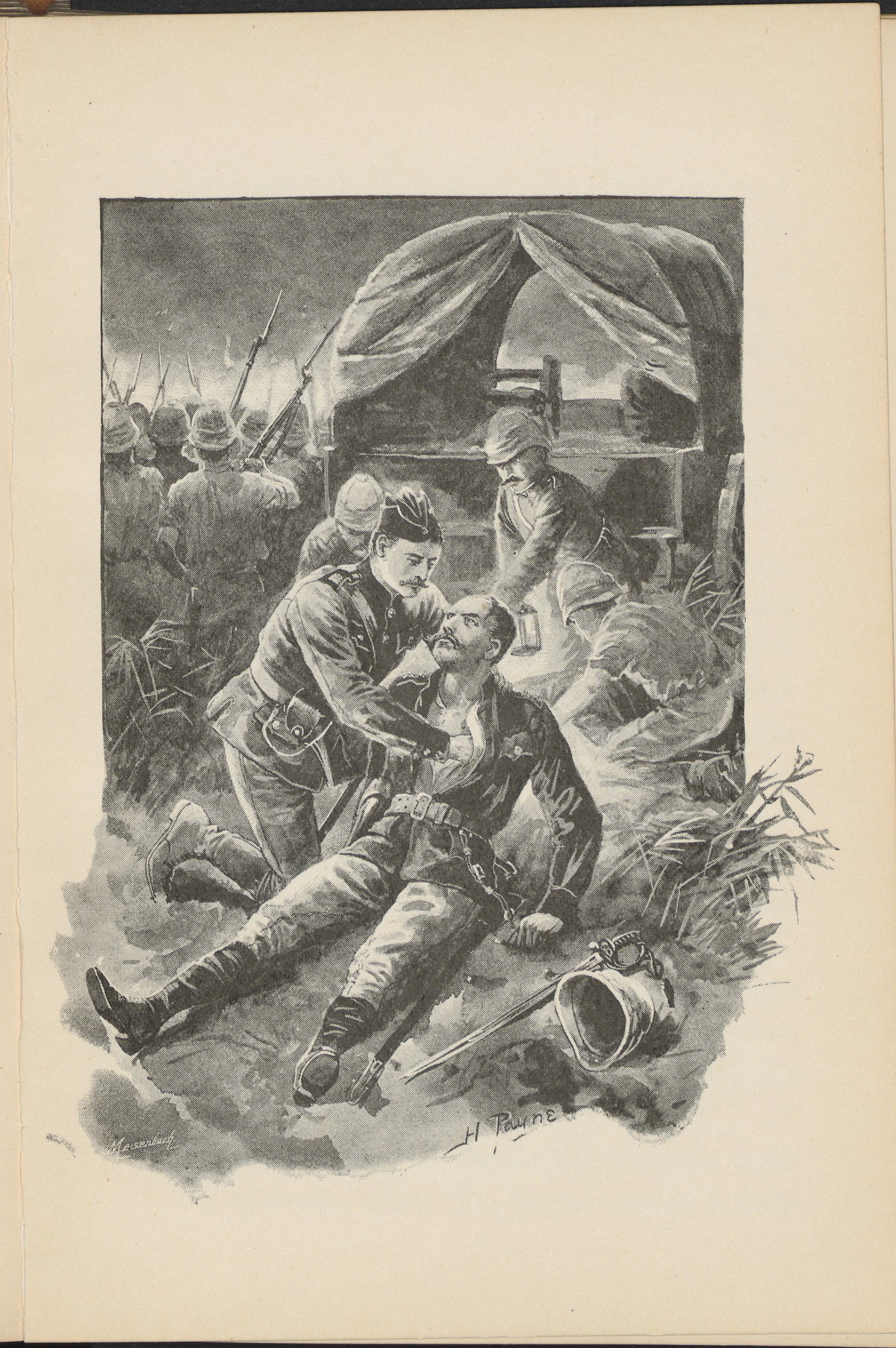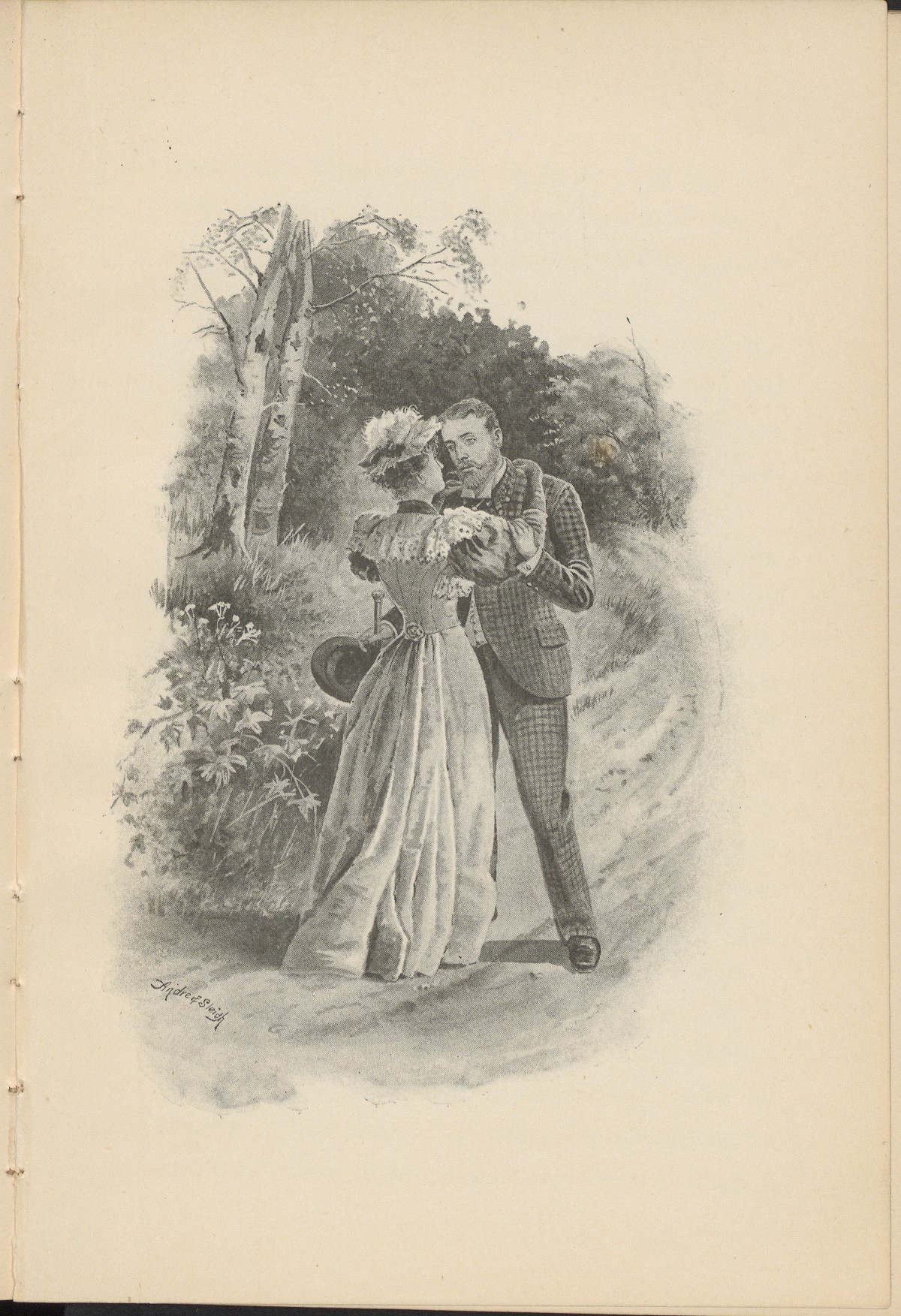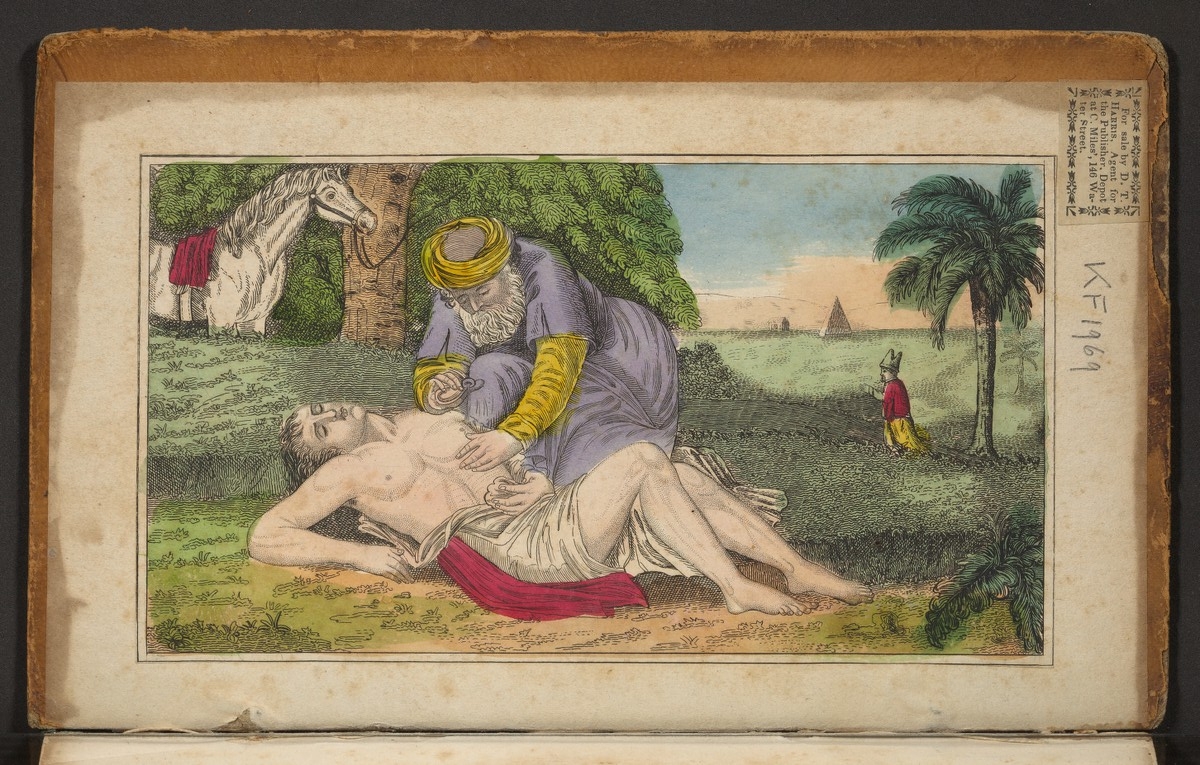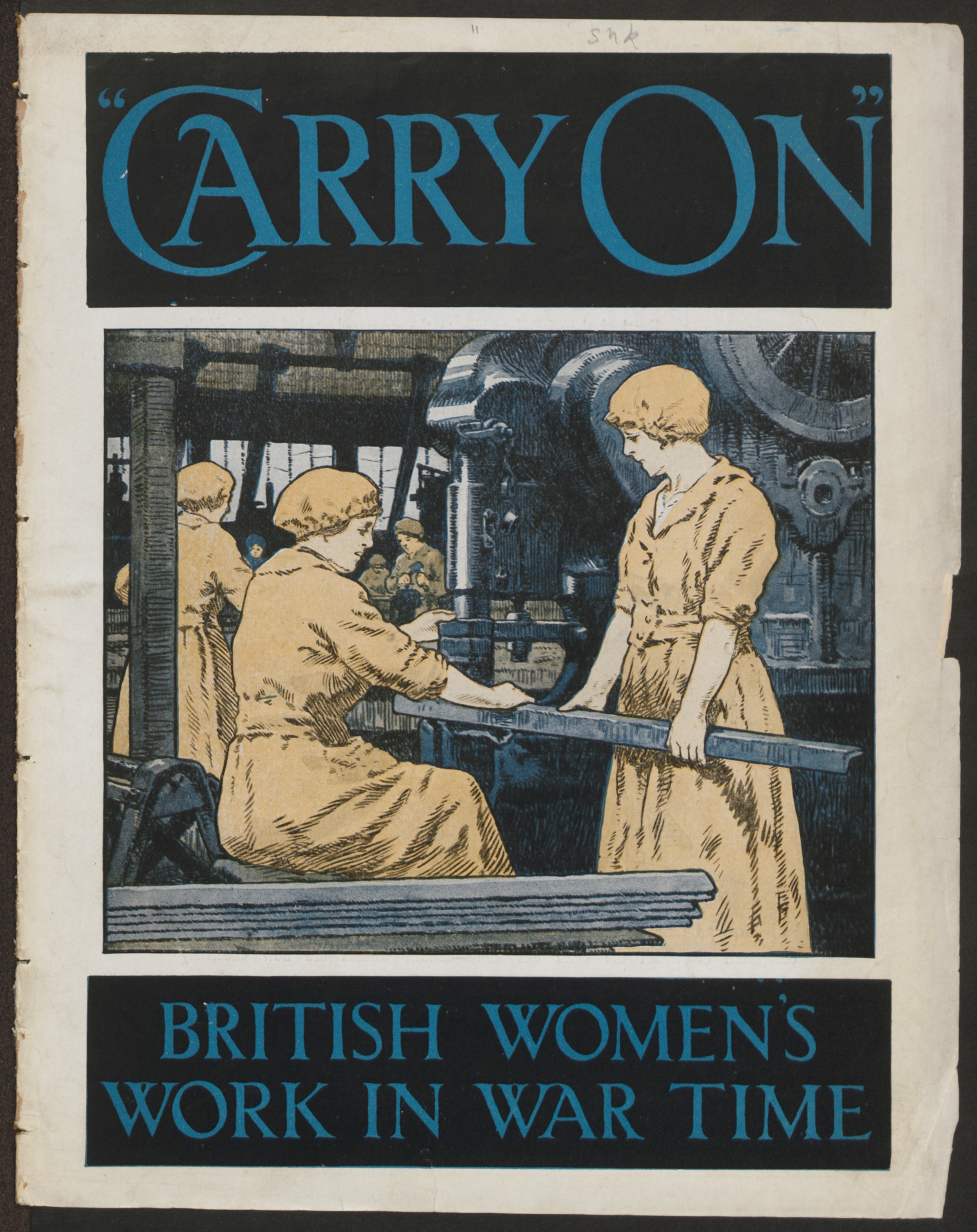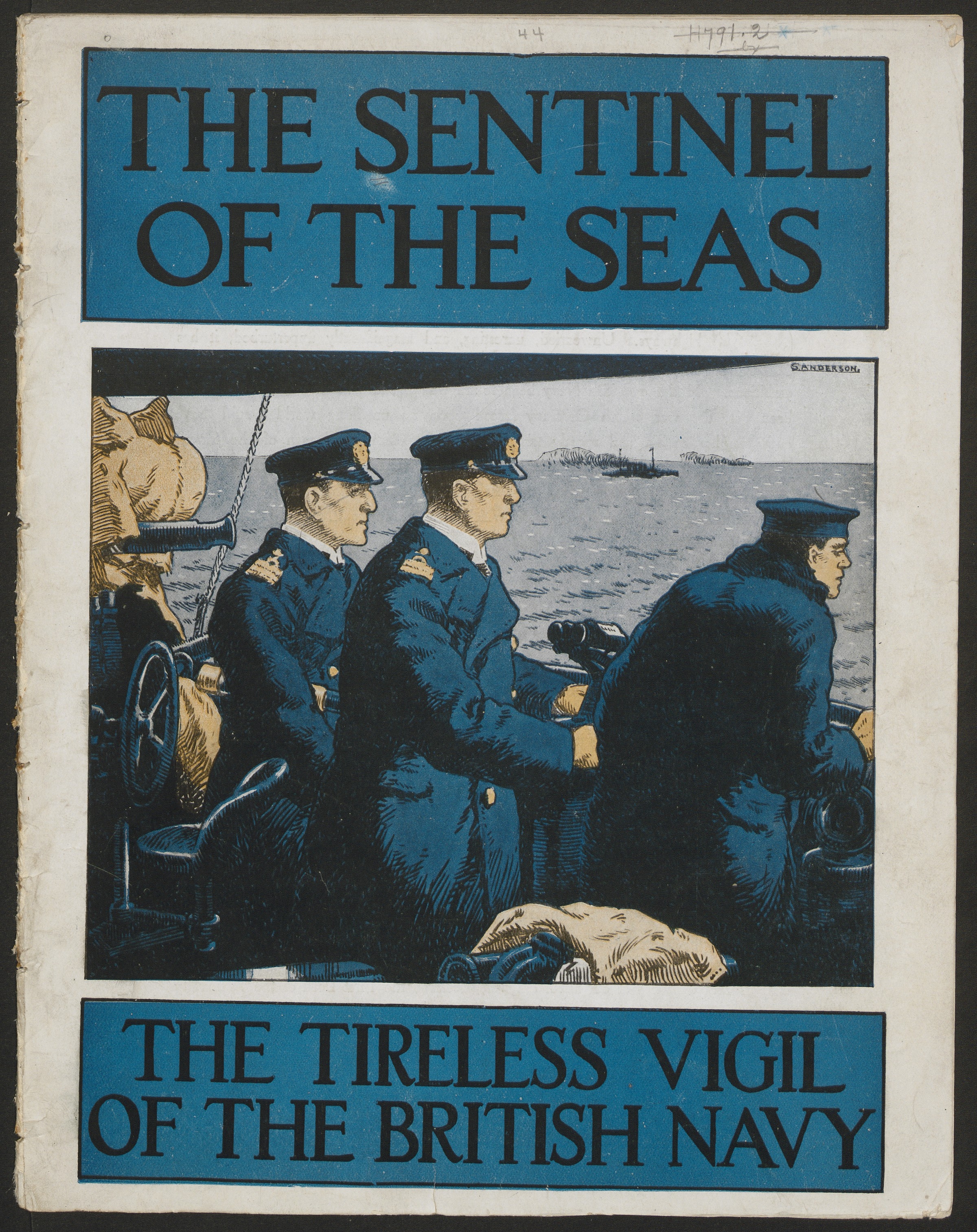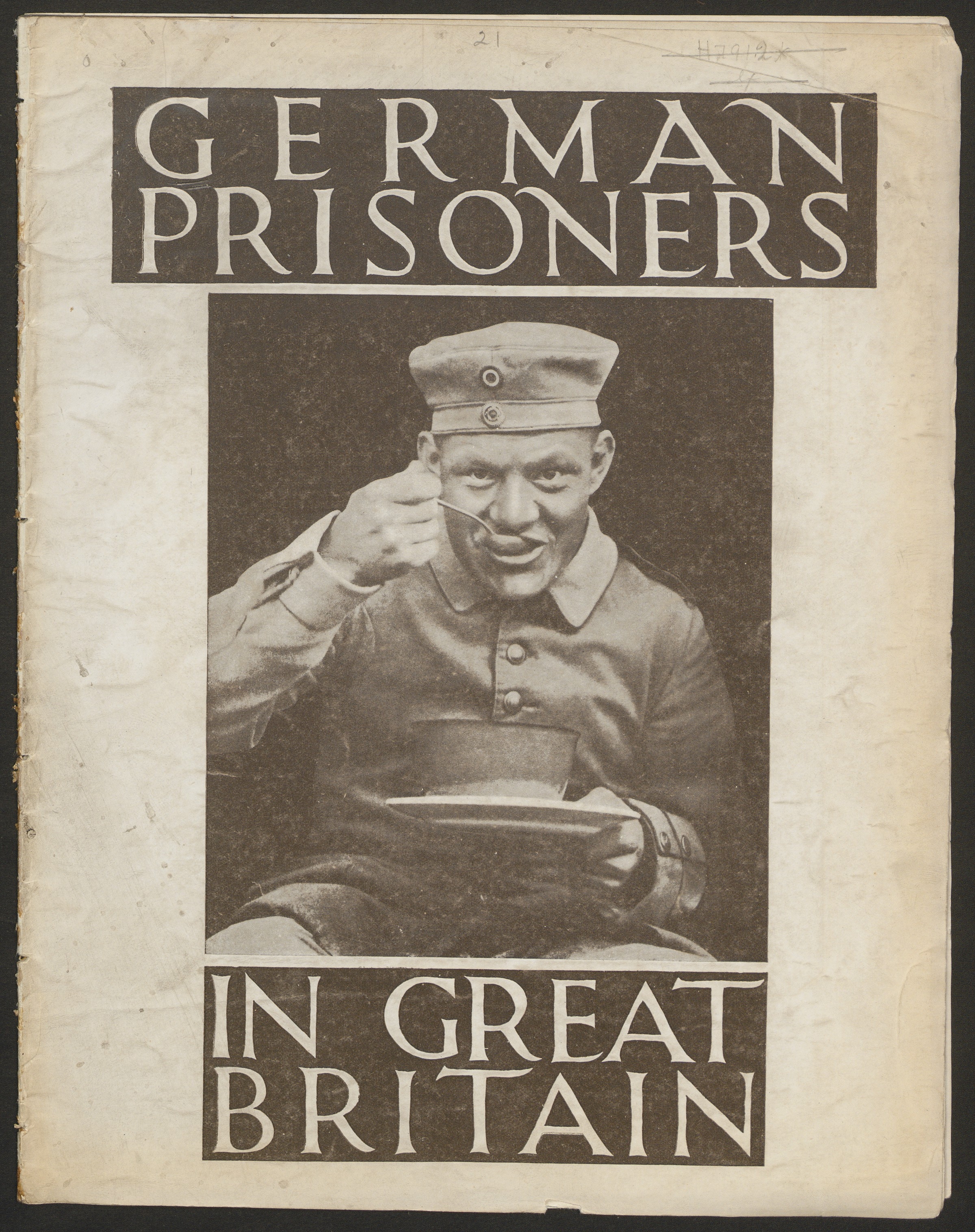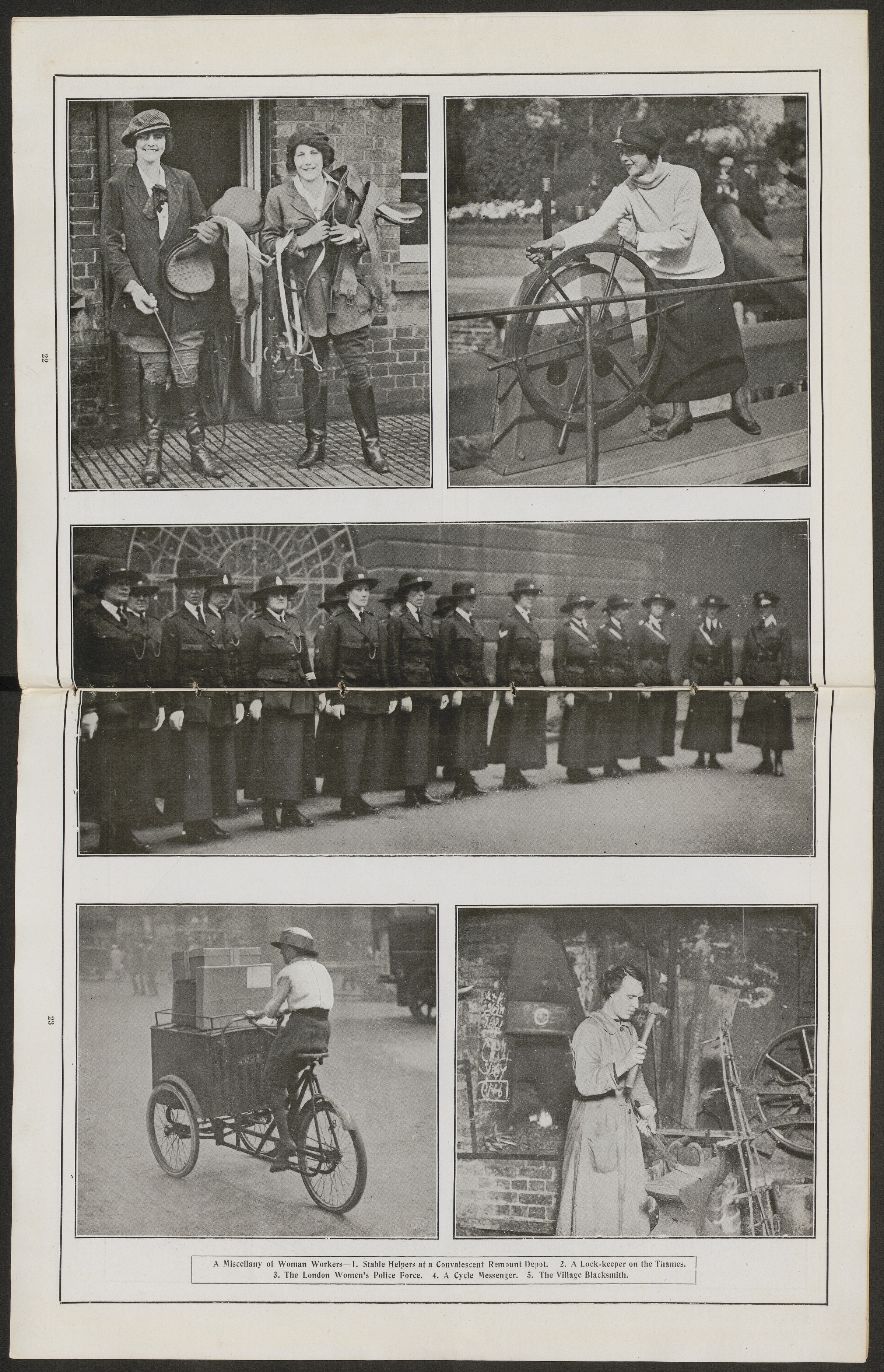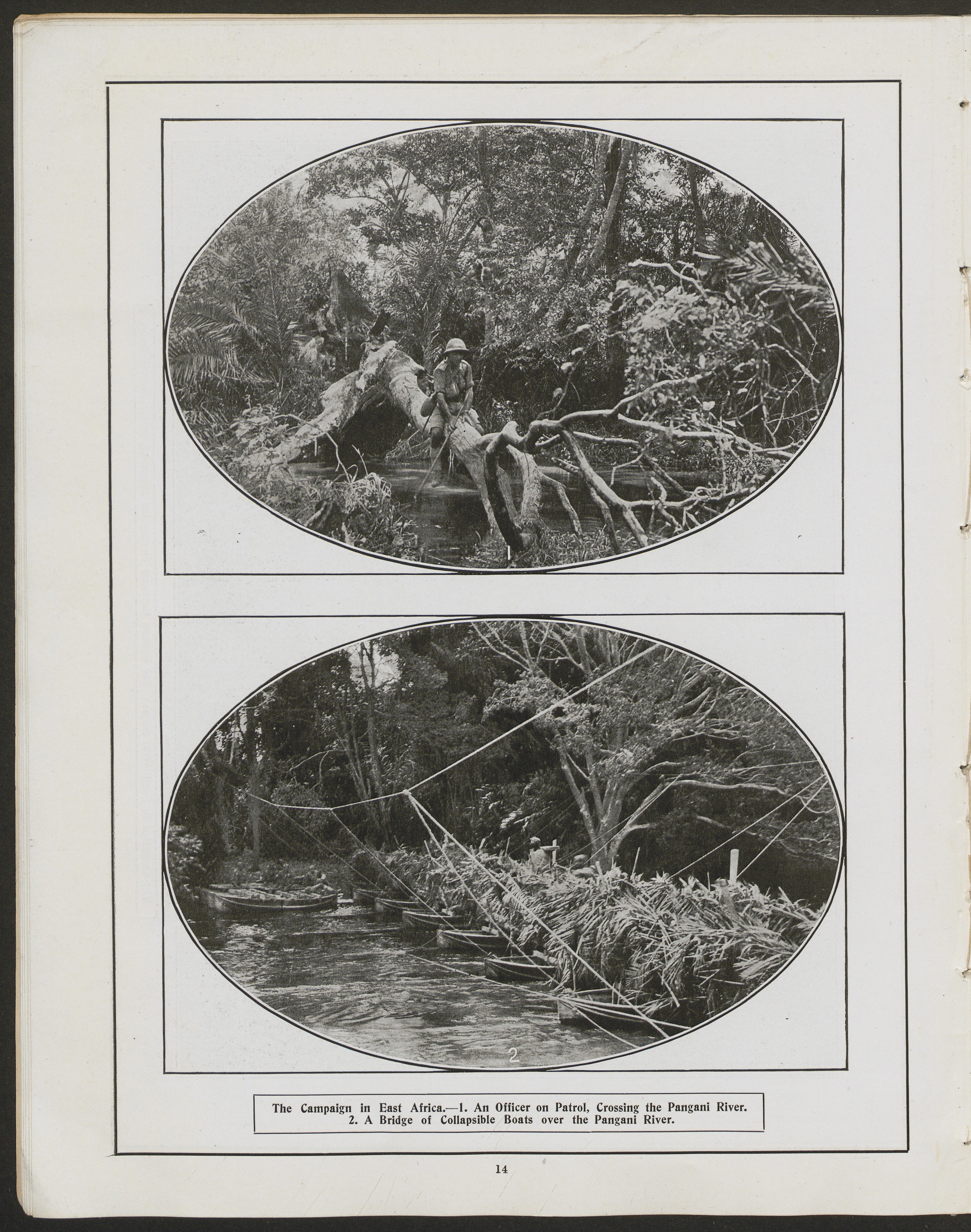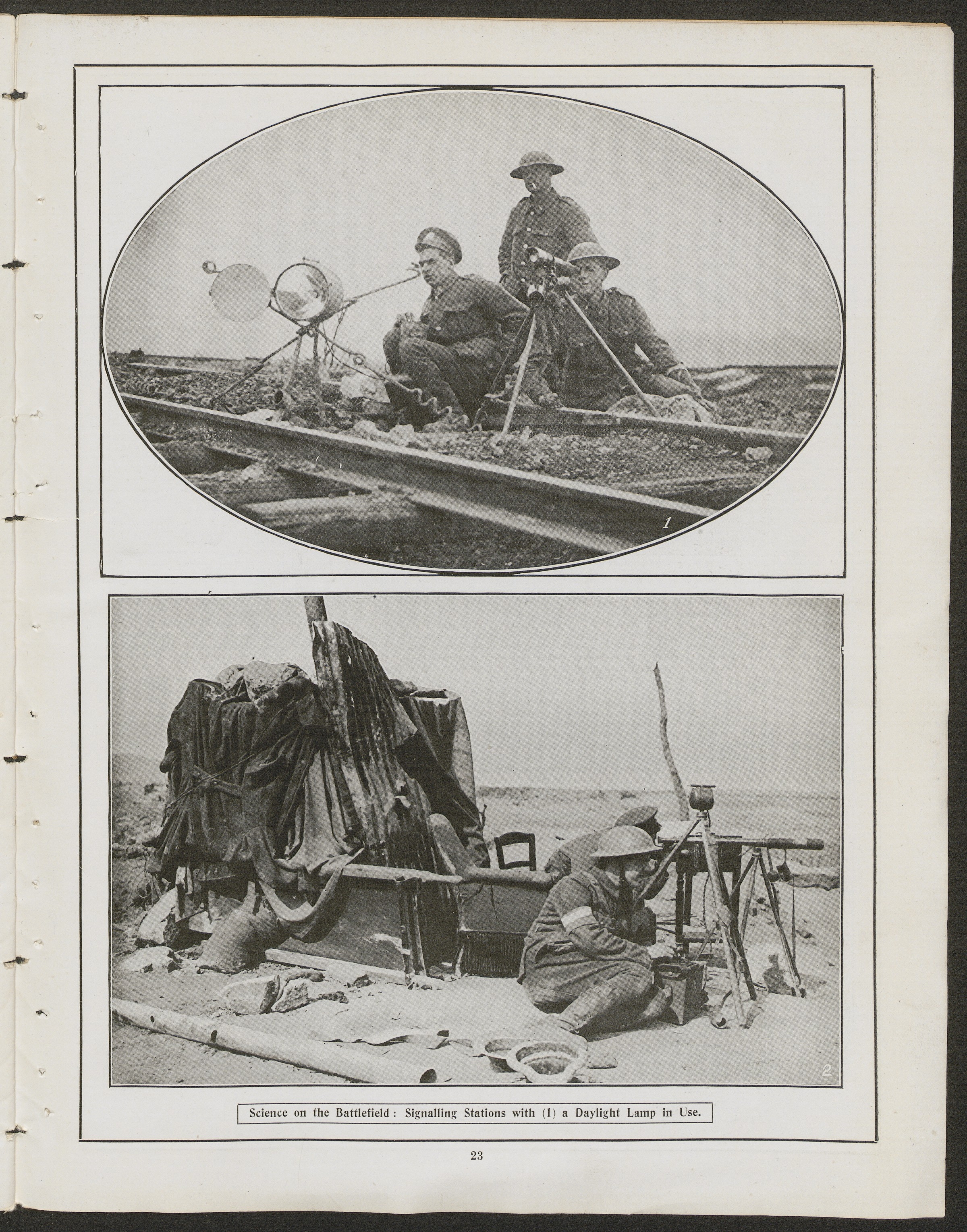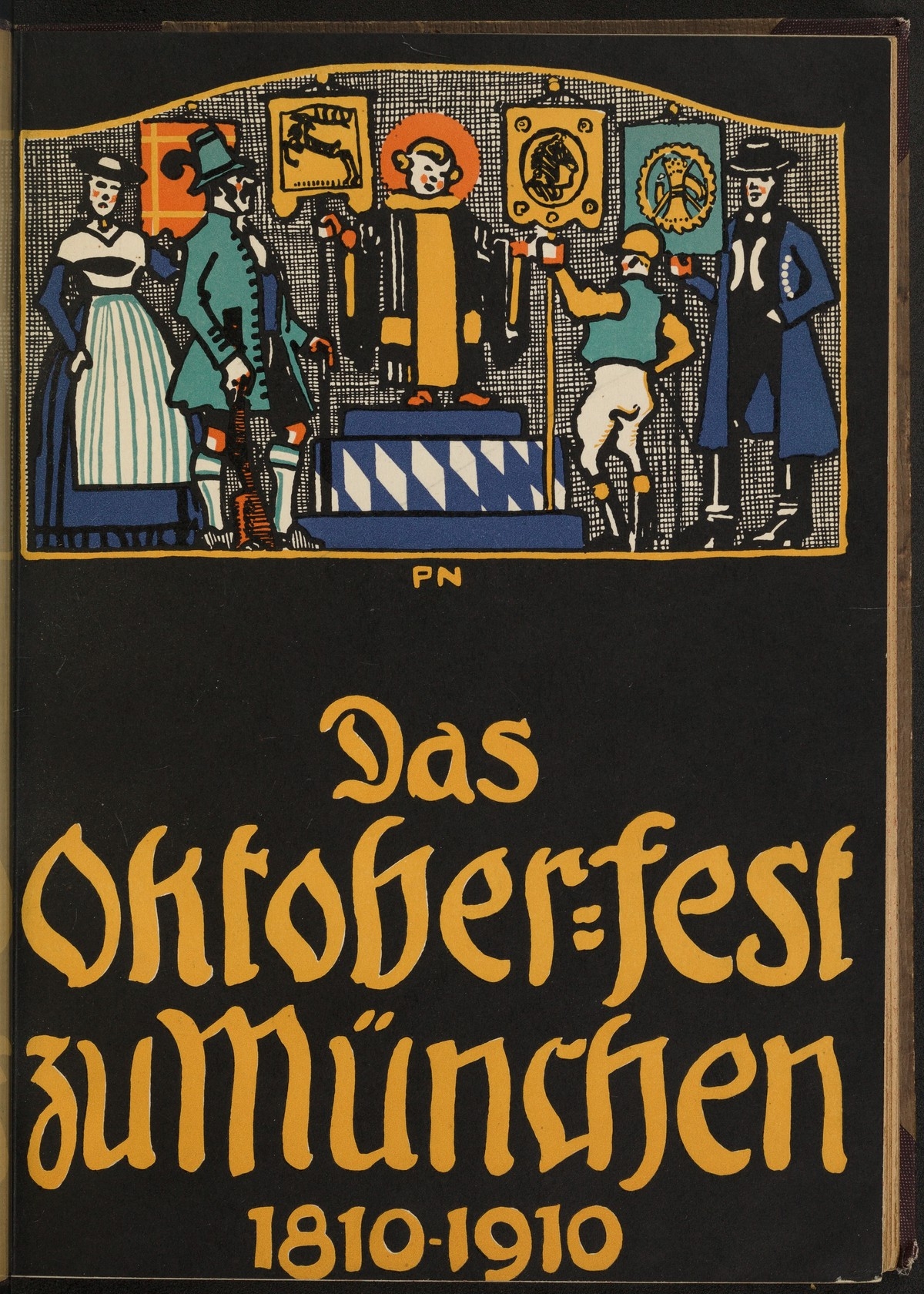
Lillian Moller Gilbreth (1878-1972) was a pioneer in blending psychology and engineering into the management of the workplace. In recognition of her accomplishments, Lillian Gilbreth was the first woman to be elected to the National Academy of Engineering, and until recently, the only woman to have been awarded the Hoover Medal for great, unselfish, nontechnical services by engineers to humanity. Her doctoral dissertation, The Psychology of Management, Gilbreth laid out three fundamental recommendations for management– focus on the worker’s well being, provide individualized training, and use psychological testing to match jobs with workers. In addition to these academic achievements, she was a mother to 12 children and become the role model for the mother in the book and subsequent movie “Cheaper by the Dozen”. For most of her early career, she was overshadowed by her husband and partner in the field of scientific management, Frank Gilbreth, with publications mostly credited to him. While her husband focused much more on the scientific and technical study of efficiencies in production, Lillian would be more concerned about worker welfare and reducing stress, fatigue, and boredom. Together, their partnership resulted in comprehensive and innovative publications in the field of workplace efficiency.
The crux of the Gilbreths’ work was the creative application of motion picture film to quantify the number of motions involved in a specific work task and the time required to carry it out. The resulting data and images provided a model in which to calibrate and adjust basic human motion for greater efficiency and less physical and mental stress. Due to the injuries and disabilities resulting from WWI, Frank and Lillian also became proponents of workplace solutions for those with disabilities. Their publications would help employers understand how to modify environments and workflows to accommodate the worker’s physical limitations. This book, “Motion Study for the Handicapped,” which was published in 1917, is considered the first book to provide in-depth investigation into occupational rehabilitation. In the volume, Frank demonstrates the application of motion pictures to break down the essential motions in a job and how to pare them down to their bare necessities, increasing production efficiencies and reducing worker fatigue substantially. He created flow charts and elaborate 3D models to track movements of workers and products through their various stages to develop better work environments.
The aim of this book is to present methods of least waste in training and placing the handicapped, to tell not only what has been done and what can be done but also actually how to do it and why it should be done in this manner…. Along with these the many manufacturers who have placed their devices at our disposal ; the managers and workers in the industries who have cooperated in our investigations and offered opportunities to those whom we have trained ; and especially, perhaps, the handicapped themselves, who have demonstrated their successful methods, offered their experience, voluntarily acted as subjects for investigations, and cheerfully followed all suggestions offered. The progress in work for the handicapped along all lines is astounding.
Mr. Gilbreth has set out to take moving pictures of as many champions or experts in various trades or sports as he can, in order to study their methods and find the points of similarity between their motions. So the champion typist of the world, an expert bricklayer, and Christy Mathewson, the famous baseball pitcher, have been photographed ; and a few months ago, in Germany, Gilbreth took pictures of the champion fencer of the world. He even hopes to get pictures of the champion oyster-opener of Rhode Island !…Motion study for the blinded, like Motion Study for the crippled, involves three branches of work— teaching the teachers of the blinded, teaching the blinded themselves, and discovering opportunities in the industries where the taught can be satisfactorily placed.
Again, through the packet method, which provides for the arrangement of materials on a proper support and in the required sequence and the proper position to be transported to the next operation, it is possible to combine ” Search ” (1), ” Find ” (2), ” Select ” (3), ” Grasp ” (4) and ” Position ” (5), and to make of the entire five elements one operation requiring nothing but a simultaneous reach and grasp. The elements ” Assemble ” (7), ” Use ” (8), and ” Dissemble ” (9) can also, in many cases, be performed without the use of the eyes and with the effort involved much minimized through the use of proper desks and work-benches, chairs, arm-rests and foot-rests. An enormous amount of fatigue can be removed on many types of operations if the forearms are properly supported.
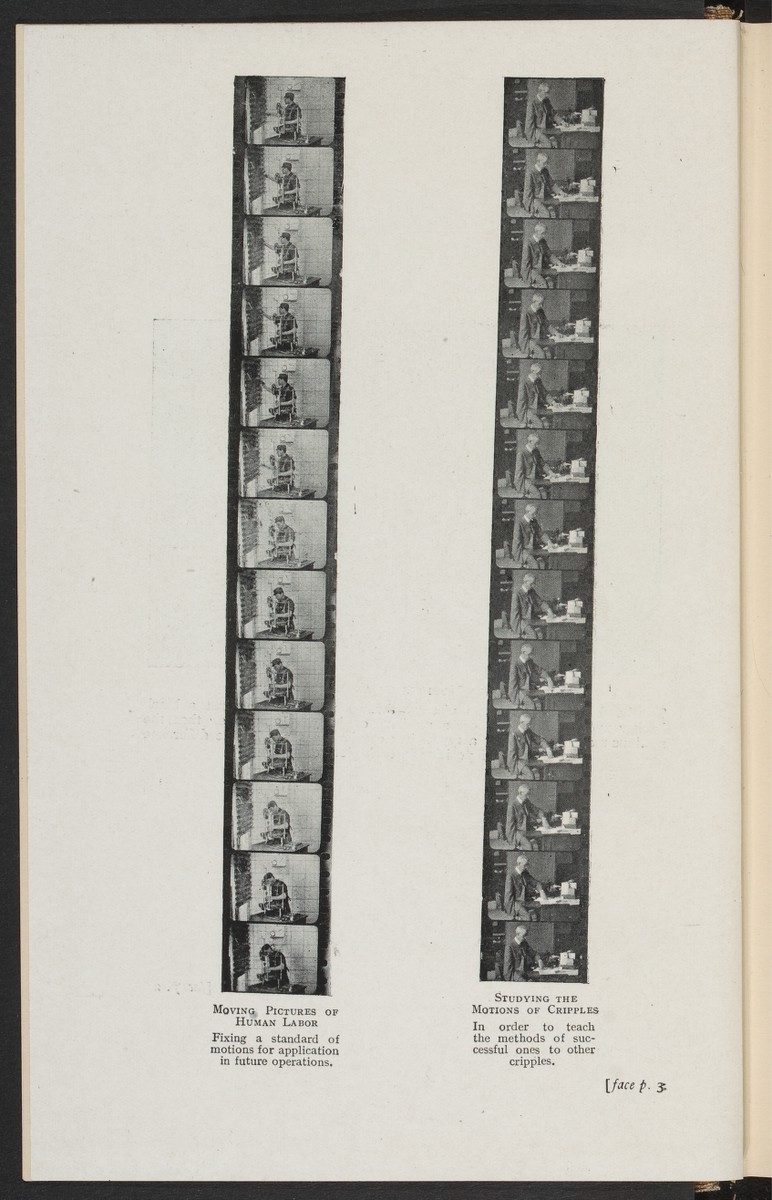
motion picture film capturing worker movements
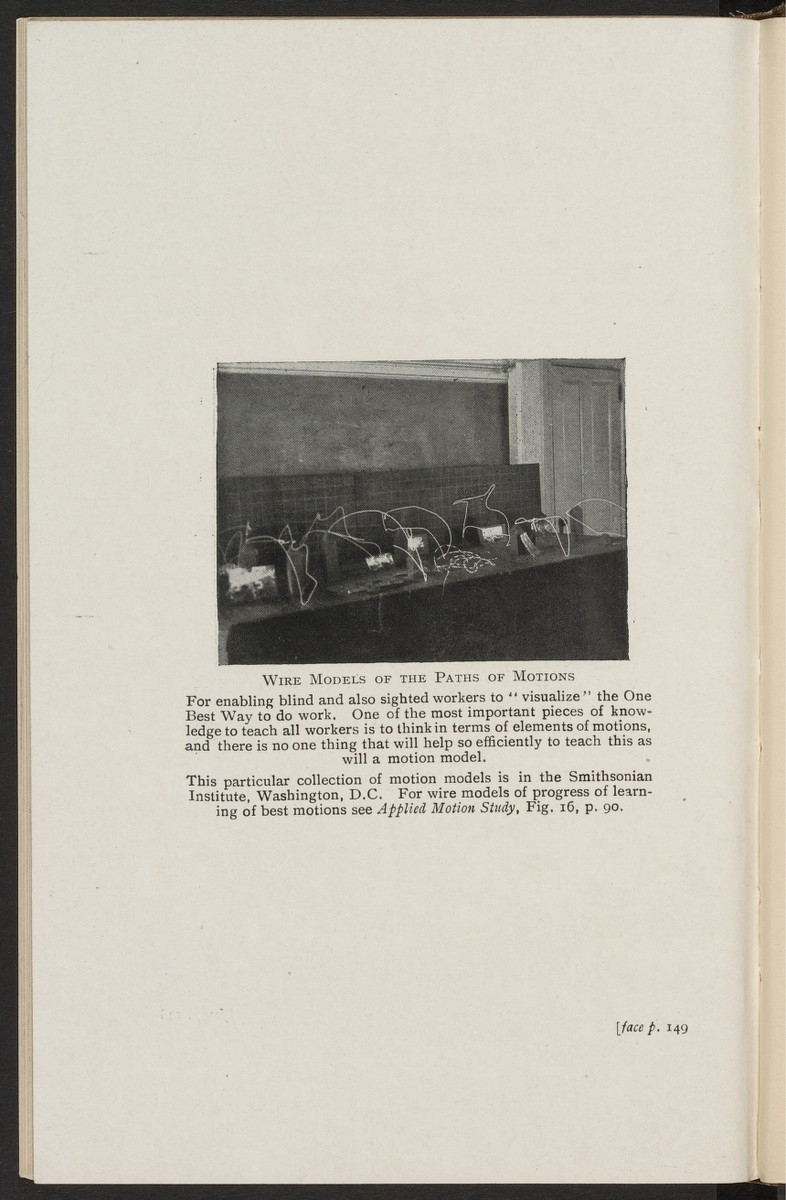
3D models created based on the film capture of movements for further study and training
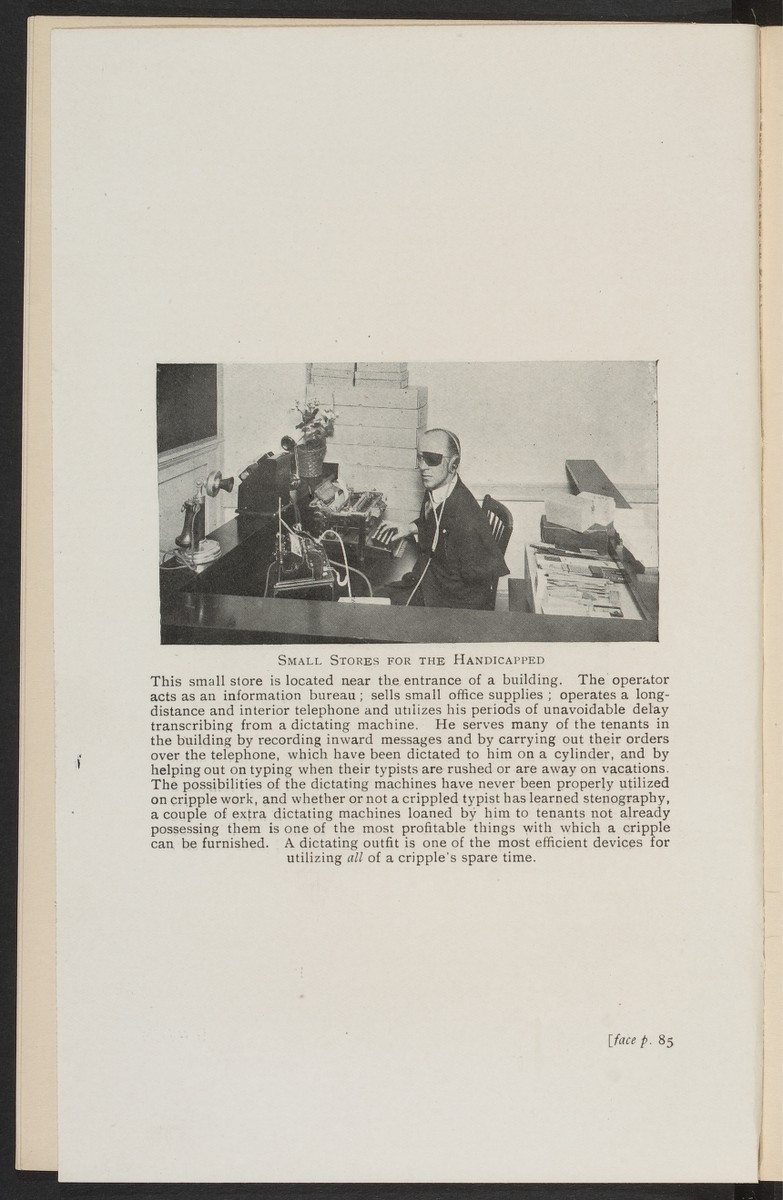
a disabled worker equipped with a dictaphone to assist in managing orders

modified keyboard machine to aid a worker with one arm

taking motion pictures of a typist and analysis of the film
- Description:
- Gilbreth, Frank Bunker. Motion study for the handicapped. London : G. Routledge & Sons, 1920.
- Persistent Link:
- http://nrs.harvard.edu/urn-3:FHCL:4882964
- Repository:
- Widener Library
- Institution:
- Harvard University

